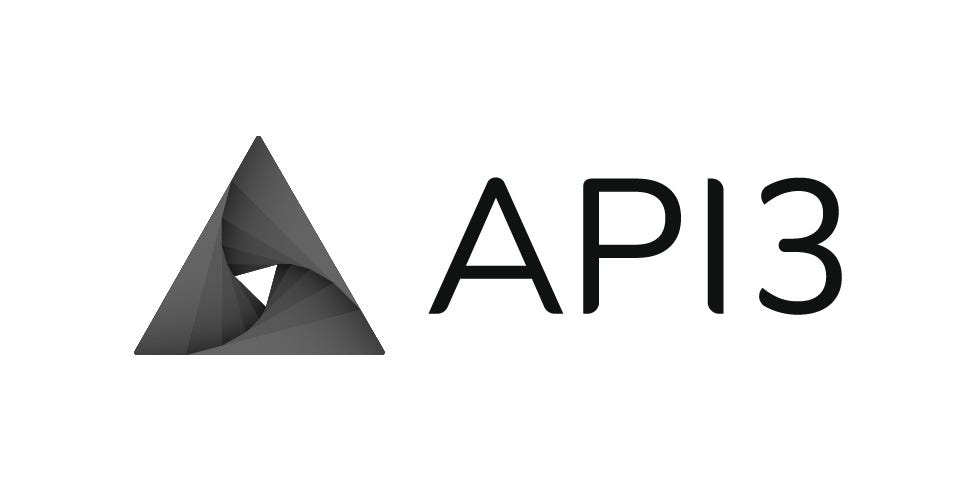API3 Staking Overview
API3 is a platform that provides decentralized API services for Web3 applications, allowing smart contracts to access reliable real-world data directly from APIs without relying on third-party oracles. API3 is also a governance token that grants voting power in the API3 DAO, which allocates resources and governs the project. Staking API3 tokens allows users to participate in governance, earn weekly rewards in API3 tokens, and provide coverage for Web3 APIs, Beacons, and dAPIs.
If you’re also interested in participating in the governance and earning rewards by staking API3, check out this guide on how to stake API3 for a step-by-step walkthrough.
How to Stake API3 (API3)
Step 1 : Connect your wallet to the API3 staking page
Step 2 : Deposit your API3 Tokens into the coverage staking pool
Step 3 : Confirm the deposit transaction
Step 4 : Stake your deposited tokens into the API3 DAO
Step 5 : Confirm the staking transaction
Step 1 - Connect your wallet to the API3 staking page
To start staking API3 tokens, visit the official AP13 website and click “Connect Wallet” in the top right corner. Choose your preferred wallet provider and follow the instructions to connect your wallet. This will enable you to access and interact with staking smart contract.
Step 2 - Deposit your API3 Tokens into the coverage staking pool
To deposit your API3 tokens, click on the “Deposit” button and enter the amount of tokens you want to deposit. The minimum deposit amount is 100 API3 tokens. You will also see the estimated transaction fee in ETH that you will need to pay for this operation. Ensure that you have enough ETH in your wallet to cover the fee before clicking the “Confirm” button.
Step 3 - Confirm the deposit transaction
After confirming your deposit, you’ll see a confirmation window with details of the transaction, including the amount, fee, and gas price. You can adjust the gas price and limit to affect the transaction’s speed and cost. You’ll also see a warning that depositing tokens means providing insurance and risking a loss in case of a claim. Click “Confirm” on your wallet interface to process the transaction.
Step 4 - Stake your deposited tokens into the API3 DAO
Once your deposit transaction is confirmed, you can stake your tokens into the API3 DAO to earn rewards. Simply click on the “Stake” button, enter the amount of tokens you want to stake, and confirm the transaction after checking the estimated transaction fee. The maximum amount you can stake is equal to your deposited balance.
Step 5 - Confirm the staking transaction
After clicking “Confirm” to stake your tokens, a confirmation window will show the details of the staking transaction including the amount of tokens staked, transaction fee, and gas price and limit. You can adjust the gas price and limit if you wish to lower the transaction cost. Once confirmed, your wallet provider’s interface will show a notification that your transaction is being processed.
Also read: How to Buy API3 (API3)
Popular Video Guides on Staking API3 (API3)
Best Places to Stake API3 (API3)
Several alternatives are accessible for staking API3, and each has its own set of advantages and disadvantages. Below are some platforms where you can stake your API3:

The API3 DAO platform is the official platform for staking API3 tokens and participating in the governance of the API3 ecosystem. Staking on the API3 DAO ensures coverage for potential financial losses from dAPI malfunctions and helps secure and incentivize the oracle network. The platform aims to have 50% of tokens staked, and the APY/ROI depends on the staked token percentage, subject to change through DAO voting.
Pros
- Allows for participation in the governance of the API3 ecosystem and a say in the direction and development of the project.
- Offers an opportunity to earn weekly rewards that are paid in API3 tokens and potentially benefit from the appreciation of the token price.
- Provides coverage for potential financial losses from dAPI malfunctions that the dAPI consumer might incur and helps secure and incentivize the oracle network.
- Offers the ability to stake tokens directly from one’s wallet without relying on a third-party platform or service.
Cons
- Tokens must be locked for a certain period of time and cannot be withdrawn or transferred until the lock-up period is over.
- Fees in ETH must be paid for every transaction involving the staking or unstaking of tokens.
- Risks of price volatility, smart contract bugs, platform hacks, regulatory changes, etc. must be taken into account, which could affect the value of one’s investment.
- Regular monitoring of the staking pool and APY is necessary to adjust the staking strategy accordingly.
Option 2: OKX
:fill(transparent):max_bytes(150000):strip_icc()/OKX-logo-d77d5bd69f694e9bab776e5d3fa7efb9.jpeg)
OKX is a popular cryptocurrency exchange that offers staking services for various tokens, including API3. The APY or ROI for staking API3 on OKX is fixed at 1%, and there are no fees for staking or withdrawing tokens. Moreover, there is no lock-up period, and tokens can be withdrawn or transferred anytime. Staking on OKX does not provide any governance or voting rights in the API3 ecosystem, nor does it offer coverage for potential financial losses from dAPI malfunctions.
Pros
- Daily rewards in API3 tokens can be earned, potentially benefiting from token price appreciation.
- Earnings can be increased over time by compounding rewards through reinvestment into the same pool.
- Staking and withdrawing tokens on OKEx is fee-free.
- Tokens are not locked up and can be withdrawn or transferred at any time.
Cons
- Account creation, identity verification, and token deposit to the exchange wallet are required, which may take time and effort.
- Trust in OKEx’s security and reliability is necessary as a platform.
- Like any other exchange, here the investment is also subjected to risks such as price volatility, exchange hacks, and regulatory changes.
- No governance or voting rights in the API3 ecosystem are provided, and there is no coverage for potential financial losses from dAPI malfunctions.
Option 3: Binance

Binance is a popular cryptocurrency exchange that offers various trading and staking services for different tokens, including API3. Staking API3 on the Binance platform is a way of earning passive income by locking your API3 tokens on the exchange and receiving rewards based on the staking duration and amount. Binance offers flexible and locked savings products for staking API3 tokens, with a claimed APY of 1.77%.
Pros
- Easy and quick access to buying and selling API3 tokens using USDT or BUSD as trading pairs.
- Ability to deposit and withdraw API3 tokens from other wallets or platforms to your Binance account.
- Opportunity to earn passive income by staking API3 tokens on the platform and receiving rewards based on the staking duration and amount.
- Benefit from the security and convenience of using a reputable and user-friendly exchange with 24/7 customer support and high liquidity.
Cons
- Loss of control over private keys and reliance on Binance to manage your funds, exposing you to the risk of regulatory changes or platform hacks that could affect your funds or access to them.
- Need to pay fees to Binance for using its services, including trading and withdrawal fees that may vary depending on the market conditions and your account level.
- Opportunity cost of staking your tokens on Binance instead of the official API3 DAO platform, which offers higher rewards, governance rights, data insurance, and DAO shares.
Also read: API3 (API3) Price Prediction
Benefits of Staking API3 (API3)
- Staking API3 tokens generate shares in the DAO through revenue sharing from insurance service fees, allowing for participation in the governance of the API3 ecosystem.
- It generates inflationary rewards by decreasing the circulating supply of API3 tokens through revenue burn from insurance service fees. As a result, the token becomes scarcer, which has the potential to increase in value.
- Staked API3 tokens offer improved inflation protection compared to unstaked tokens because the supply of staked tokens is reduced, which limits the number of tokens available for sale on the market.
- Staking API3 tokens grants voting rights on DAO proposals, enabling participation in the decision-making process of the DAO and having a voice in the future direction of the API3 ecosystem.
- Staking API3 tokens in the coverage staking pool provides quantifiable security guarantees in the form of coverage for API3 users. This coverage safeguards against potential financial losses from dAPI malfunctions that the dAPI consumer may encounter.
More Cryptos Similar to API3 (API3)

Chainlink (LINK)

The Graph (GRT)

Livepeer (LPT)

Polkadot (DOT)

Theta (THETA)
Frequently Asked Questions
What is staking Stargate API3 (API3)?
Staking Stargate API3 (API3) involves locking up your API3 tokens in a smart contract known as the coverage staking pool to provide security and insurance for users of decentralized APIs (dAPIs) that rely on API3. In return, you earn weekly rewards in API3 tokens and gain voting power in the API3 DAO, which governs the API3 project.
How much can I earn by staking API3 (API3)?
The amount of rewards that can be earned by staking API3 depends on various factors, including the staked amount of tokens, the duration of staking, the total amount of staked tokens across all users, the inflation rate, and the staking target of the API3 network, and the fees generated by the usage of dAPIs and Web 3.0 APIs. Currently, the annual reward rate (APR) for staking API3 is 18.75%, as per the API3 website. This implies that if you stake 1000 API3 tokens for a year, you will receive 187.5 API3 tokens as rewards.
What are the risks of staking API3 (API3)?
Staking API3 comes with some risks, including smart contract risks, slashing risks, liquidity risks, and regulatory risks. The staking contract may have vulnerabilities, and there is a possibility of slashed staked tokens due to malfunctioning dAPIs or Web 3.0 APIs. The one-week cooldown period for withdrawals and fluctuations in the token price may also pose liquidity risks. Moreover, changes in the legal and regulatory environment could affect the adoption and value of API3 tokens and services.
How can I unstake or withdraw my API3 (API3)?
To unstake or withdraw your API3 tokens, you need to connect your wallet to the API3 staking app, click on the “Unstake” button, enter the amount of tokens you want to unstake and confirm the transaction by paying the gas fee. You must wait for one week (one epoch) before withdrawing your unstaked tokens. After that, you can click on the “Withdraw” button, enter the amount of tokens you want to withdraw, and confirm the transaction by paying the gas fee.
Related Articles to API3 (API3)

How to Stake API3 (API3)
Step-by-Step Instructions on how to stake API3 in just a few easy ways at the



